|
Friends of FUCOBI donated 24 awards for international students from 12 countries to attend the AQUACULTURE 2022 symposium, San Diego, February 28 to March 04, 2022.
0 Comentarios
Arsenic occurs naturally in rocks and soil across Minnesota. Small amounts can dissolve into groundwater that may be used for drinking water. Drinking water with arsenic in it can increase your risk of cancer and other serious health effects. It is important to know how much arsenic is in your drinking water and how you can reduce your exposure. Health Effects Drinking water with low levels of arsenic over a long time is associated with diabetes and increased risk of cancers of the bladder, lungs, liver, and other organs. Arsenic can also contribute to cardiovascular and respiratory disease, reduced intelligence in children, and skin problems, such as lesions, discoloration, and the development of corns. Health impacts of arsenic may take many years to develop, especially if you are in contact with arsenic at a low level over a long time. How to Protect Yourself and Your Family The U.S. Environmental Protection Agency (EPA) standard for arsenic in drinking water is 10 micrograms per liter (µg/L).* However, drinking water with arsenic at levels lower than the U.S. EPA standard over many years can still increase your risk of cancer. As a result, EPA has set a goal of 0 µg/L for arsenic in drinking water. This goal does not consider the cost of water treatment to completely remove arsenic from drinking water. *1 microgram per liter (µg/L) = 1 part per billion (ppb). If you have a private well Minnesota Department of Health (MDH) recommends every private well is tested for arsenic at least once. As of 2008, well contractors test each newly drilled well for arsenic and share the results with the well owner and MDH. You can find existing test results online at Minnesota Well Index (see Resources). ▪ If arsenic was not detected in the first sample, your water is unlikely to have arsenic later. ▪ If arsenic was detected in the first sample, you may want to retest your well water about six months after construction. MDH research found that when arsenic is detected in a new well, the level may increase or decrease in the first few months after construction (see Private Well Protection Arsenic Study). MDH recommends you use an accredited laboratory to test your water. Contact a laboratory to get sample containers and instructions, or ask your county environmental or public health services if they provide well testing services (see Search for Accredited Laboratories). If arsenic is detected in your water and repeat sampling confirms the results, consider installing home water treatment or using a different source of drinking water (see Home Water Treatment). MDH highly recommends taking action if your water has an arsenic level above 10 µg/L. If you are on a public water system The EPA has a federal drinking water standard of 10 µg/L for public water systems serving places where people live, work, go to school, and receive childcare. These systems take action to reduce arsenic if levels exceed the standard. You can find the level of arsenic detected in the system serving where you live by reading the system’s water quality report (also known as a Consumer Confidence Report [CCR]). You can call your public water system to get a paper copy of your CCR, or you may be able to find it online (see Consumer Confidence Reports). Noncommunity systems serving schools, offices, factories, and childcare facilities test for arsenic; you can contact your non-community system to find the level of arsenic detected in the system. Noncommunity systems serving restaurants, resorts, and campgrounds are not required to test for arsenic. If you want to take additional steps to reduce your exposure to arsenic in drinking water, you can install home water treatment (see Home Water Treatment). Reduce Other Contact with Arsenic You may come into contact with arsenic in ways other than water. Use these tips to reduce your contact: ▪ Throw away arsenic-treated wood in the trash; do not burn it. ▪ Know the ingredients of all medications or health remedies you use, especially "folk" remedies. ▪ Seal arsenic-treated wood structures every six months to two years. ▪ Make sure children wash their hands after playing on structures with arsenic-treated wood. ▪ Wash and peel vegetables grown underground (e.g., potatoes, carrots). ▪ Eat less rice, cereal grains, or other foods that contain arsenic. ▪ Do not use old pesticides and soil supplements if they contain arsenic. (If they contain arsenic, drop them off at a hazardous waste collection site.) Background Information Arsenic occurs naturally in soil and rock and can dissolve into groundwater. For most people, food and water are the biggest sources of exposure to arsenic. There are two forms of arsenic:
Arsenic in Minnesota Water Arsenic can be found in groundwater throughout Minnesota but is more likely in some areas than others. Approximately 10 percent of private drinking water wells in Minnesota have arsenic levels higher than 10 µg/L. Some wells have levels as high as 350 µg/L. Arsenic levels can vary between wells, even within a small area. See a map of arsenic levels in private wells at Private Wells-Arsenic. Few public water systems have detected arsenic levels above the EPA standard. If a system detects arsenic levels above the standard, MDH works with the system to reduce the level. Source and Resources: https://www.health.state.mn.us/communities/environment/water/docs/contaminants/arsenicfactsht.pdf Advancing Mangrove Knowledge A Newsletter from the Global Mangrove Alliance The International Day for the Conservation of Mangrove Ecosystems, adopted by UNESCO in 2015, is an important commemorative day, not only to recognize the incredible benefits that mangroves provide wildlife and humanity, but also to learn about the coastal trees and better understand their full value. The Global Mangrove Alliance is proud to be connecting knowledge and supporting tools required to integrate mangroves and their ecosystem services into mitigation, adaptation, disaster risk reduction and land-use strategies with community and national leaders. A variety of tools and resources are available in our Knowledge Hub and are added to regularly. This mangrove day, take a look through the Global Mangrove Watch evidence base, read about The State of the World’s Mangroves–globally and in the Western Indian Ocean Region–or look through a variety of principles and manuals for restoration and management success. The latest updates from our Alliance are below and you can stay connected with news on Twitter, Facebook, and LinkedIn to learn about additional projects, international events, and more. If you are part of an organization that is interested in joining the Alliance and getting advanced knowledge and access to data tools, you can find all the information you need here. Happy International Day for the Conservation of Mangrove Ecosystems! Global Mangrove Watch Online Course - Now Available on a Self-Paced Schedule! Global Mangrove Watch Global Mangrove Watch (GMW), in partnership with The Reef Resilience Network, recently wrapped up the Global Mangrove Watch Mentored Online Course. If you missed the mentored course, GMW is now launching a self-paced version where you can access the lessons at any time. In addition to English and Spanish, the lessons will soon be available in French and Bahasa Indonesia. The Course enables managers and practitioners to confidently navigate the GMW platform and learn how to utilize its data and tools in support of mangrove conservation and restoration efforts. Collectively, these lessons provide a comprehensive overview of how remote sensing is used to map mangroves, how the GMW platform can be used to access and interpret mangrove data and generate reports. Course participants will also learn about the capacity of mangroves to store carbon, and the role mangroves can play in climate mitigation and policy globally. Sign up for an account at ConservationTraining.org. Once you have created an account, either click this enroll link to access the course room and enroll, or search for “Global Mangrove Watch Online Course". Mangrove Photography Awards Gallery Mangrove Action Project Celebrate World Mangrove Day by enjoying every submitted photo from this year's Mangrove Photography Awards. For the past month we have invited people from all over the world to raise their voices for the protection of one of our most critical and undervalued ecosystems. The photos illustrate the importance and diversity of life in our coastal forests and give us a fascinating insight into the world of mangroves from all corners of the earth. The State of Mangroves in the Western Indian Ocean Wetlands International & Save Our Mangroves Now!The most reliable and up-to-date information currently available on the spatial extent and recent changes in mangrove distribution in the Western Indian Ocean (WIO) region has been compiled into a new report The State of Mangroves in the Western Indian Ocean. The report includes quantification and maps of mangrove blue carbon, drivers of change, and restoration potential. It is a first in a series of spin-offs of 2021's The State of the Worlds Mangroves report. This comprehensive publication makes evident that mangrove conservation efforts need to step up in the region. We've had a loss of nearly 4% of mangrove cover in the Western Indian Ocean over the past 24 years but the potential for restoration is high, with at least 40,900 ha available for restoration. Read the full report here for recommendations on reaching restoration goals through governance, cross-country coordination, and developing and adopting practical tools, approaches, and best practices to manage the complex interactions between mangroves, their biodiversity and people. Global efforts by Fauna & Flora International and partners to protect and restore mangroves Fauna & Flora International Fauna & Flora International (FFI) supports local stakeholders to conserve threatened species and ecosystems worldwide. FFI views mangrove protection and restoration as an integral part of our global efforts to reverse biodiversity loss and combat climate change. Across their marine project portfolio, they are working with in-country partners to ensure that mangroves receive the attention they deserve. FFI’s work in Cambodia is focusing on the establishment of a national network of MPAs, building on their critical support for the designation of Cambodia’s first Marine National Park in the Koh Rong Archipelago in 2018. In Tanzania, FFI has been partnering with Mwambao Coastal Community Network on Pemba island for seven years, who are now scaling up and taking an ecosystem-based approach to coastal resource management and adaptation to climate change in northern Tanzania, incorporating 10,000 hectares of coastal forest across Zanzibar and the mainland. In Honduras, FFI is supporting five local partners to conserve a 300,00ha seascape that comprises three important marine protected areas and a rich diversity of marine species and habitats. Learn more about all three of these projects in this web story. Meet the WIO Mangrove Messengers Save Our Mangroves Now! For the UN Ocean Conference Save our Mangroves Now! launched the first of four impact stories, chronicling the life of people dedicated to mangrove conservation in the Western Indian Ocean region. This story centers around Mama Mikoko (“Mother Mangrove”) and her Mtangawanda Mangrove Restoration Women Group in Lamu, Kenya. The goal is to bring the WIO voice to the international level and make sure that those often first affected by rising temperatures and sea levels are heard. The second story, taking place in Madagascar, will be published on World Mangrove Day. If you are interested in learning more about the mangrove messengers, feel free to contact [email protected]. Mangrove Action Project Celebrates its 30th Anniversary! Mangrove Action Project (MAP) Over the past 30 years, MAP has been enthusiastically working to protect and restore mangrove forests around the world. Today, they're working with forest communities, research academics, governments, policy makers, and international policy and funding groups to support the conservation of existing mangroves, educate on how to restore degraded or unhealthy mangrove ecosystems, and support multiple generations to take an active interest in their local forests. MAP has grown from an associate group under the umbrella of San Francisco-based Earth Island Institute in 1992 to become an independent NGO as of 2006. Since its founding, MAP has developed its award-winning mangrove restoration workshops which have been taught across the globe from El Salvador and Honduras to Myanmar and Tanzania. They have also taught over a quarter of a million children about the importance of mangroves through their Marvellous Mangrove education curriculum. Source: https://www.mangrovealliance.org/ A presentation by Dr Acacia Warren RC of Southborough, Massachusetts D7910 Environmental Genomics, Inc. President Dr Acacia Alcivar Warren was born in Chone, Ecuador, and is looking for help to begin replanting mangroves at the Chone River Estuary of Ecuador. She was invited to talk about "Shrimp Farming and Mangroves of Ecuador" in the past meeting ( Wednesday, May 11 ) for ESRAG Projects Division Seminar Series. The presentation covered from the status of shrimp farming in Ecuador, its impact on mangroves deforestation, carbon emissions, and contaminants like endocrine disrupting chemicals (EDCs) in mangroves, shrimp, and people from the mangroves, and future sustainability and food security issues. Ecuador is the major shrimp producer in the Western Hemisphere. Dr Acacia Alcivar Warren has a PhD in Veterinary Medicine and Zootechnics from the University of Guayaquil, Ecuador, a MS in Reproductive Physiology and Endocrinology and a PhD degree on Immunobiology from Iowa State University (ISU). She was a postdoctoral fellow at the Biology Department at Tufts University, Medford, MA, a Research Associate at the Roche Institute of Molecular Biology in New Jersey, Nutley, USA, and visiting scientist at Boston College, MA. Acacia has worked at educational and non-governmental organizations, and private industry. She directs the global ‘ONE HEALTH Epigenomics Educational Initiative' and ‘Shrimp Scampi: A Citizens Science Project’ started by high school students to examine the levels of endocrine disrupting chemicals (EDCs) like metals, glyphosate, and bisphenol A (BPA) in shrimp sold in MA supermarkets. She also coordinates the holistic program ‘UNA SALUD / ONE HEALTH Epigenomics & Microbiomes: Somos lo que comemos / We are what we eat’, monitoring EDCs in mangrove sediment, shrimp and oysters, and people from the mangroves. Preliminary data, among a multitude that are being collected around the world, indicate that there is a reduction in immunity against the omicron variant among those who have the complete initial vaccination schedule (two or one dose, depending on the vaccine received) or who have passed the COVID-19 infection.
This may indicate - without being a categorical statement - that this variant can "evade" a person's immune system. "So far there is limited evidence available and it is not peer-reviewed on the efficacy or effectiveness of thevaccine against Omicron," the organization said in an update of the information gathered on this issue, which is at the center of concerns in the whole world. The WHO pointed out, however, that the evidence is stronger regarding the advantage that omicron has in spreading compared to the delta variant, since in countries where local transmission of the former has been detected, it is being observed that cases they double in 1.5 to 3 days. Omicron is spreading rapidly in countries with high levels of the immunized population and it is not yet clear whether this is due to evading immunity, being more easily spread, or a combination of both factors, according to those data. "Omicron is likely to outperform delta in community transmission scenarios," the WHO said. Omicron has so far been detected in 89 countries and the threat it will pose will become clear when scientists can confidently answer a series of key questions, such as how transmissible it is and how well current vaccines work or an infection previous covid protects from infection, transmission, serious illness or death. (EFE) Source:https://acortar.link/np22IT What is too small to see with the naked eye, manufactured by half the population in batches of millions and with an alarming supply? The answer, according to some scientists, is sperm. Specifically, researchers are concerned that men in the West have been producing less and less sperm since the 1970s, a decline they say shows no signs of stopping. At the current rate, they say, these men could be infertile by 2045. But these numbers should make us think. The idea that men's sperm in Western countries is about to collapse is, in a word, extraordinary. The data does not support it.
The fear of a decrease in sperm count is powerful and powerful. It has been voiced by everyone from environmentalists like Erin Brockovich to white supremacists and their mainstream media spokespersons like Tucker Carlson. The great appeal of this notion is possible because the supposed causes of a decline span the entire material and ideological gamut. They include chemicals found in common household products, as well as modern urban lifestyles in which white men are physically sedentary and forced to share power with people of constantly diverse genders and ethnicities. It's worth taking a closer look at the evidence before heading to the "save the sperm" rally. The most recent round of apocalyptic predictions was sparked by an influential 2017 article that compiled sperm count data from studies published between 1973 and 2011. Figures for the US, Canada, Western Europe, Australia, and New Zealand, is that is, rich countries, mostly white, were grouped in the "western" category and the remaining data were grouped in the "other" category. While there was insufficient data to draw conclusions about "other" men, the authors found that the sperm count of the average population among men in the "Western" category had decreased by more than 50% since 1973. We analyzed the data and found that the apocalyptic verdict of the disappearance of the sperm is far from the only plausible interpretation of what is happening here. The authors assume that the high sperm counts of men in "Western" nations in the 1970s represent the norm. This assumption makes the pernicious but all-too-common mistake of treating the men of prosperous, white-majority nations as the standard by which everyone else should be compared. It also takes for granted that when it comes to sperm, the more the merrier. The available evidence does not support this association: male fertility does not scale proportionally with sperm count. Some men with a low sperm count can be very fertile, while others who are overflowing with sperm can have a hard time conceiving. Add to this the well-known fact that sperm count is very context sensitive (to tight underwear, exercise, a hot bath, and even the season) and it's easy to see how a single sperm count measurement is an unreliable indicator of fertility. . There is also the question of what is causing the decrease in sperm count. If we take seriously the idea that environmental pollutants are hostile to sperm production, we would expect to see the most drastic declines among men living in the most polluted environments. It is well established that the world's poor, that is, those who live predominantly (but not exclusively) in the "other" countries, bear the greatest burden of environmental pollution. However, the authors and the media have launched into framing the crisis as one that confronts "Western" men; what is ignored is the fact that the study data were insufficient to draw conclusions for men in the "other" category. The very use of the categories "western" and "other" makes little scientific sense and matters dangerous racial nuances. Men frequently migrate between "western" and "other" nations, making countries a poor indicator of environments that could affect any man's sperm. And conditions vary widely within nations, especially large and heterogeneous ones like the United States or Brazil. Knowing which passport a man is carrying tells you little about contaminants or other possible sperm-reducing factors he may have encountered. Apart from all this, these seemingly alarming findings may simply reflect normal variation. This would be unprecedented - studies have documented natural ups and downs in the levels of reproductive hormones such as testosterone and progesterone, with no impact on fertility. Could sperm counts vary in the same way? The researchers don't even consider this possibility. The lesson from sperm depletion research is not that we are facing imminent human extinction (at least not for sperm-related reasons). Rather, it is the most banal but accurate fact that there is much we do not know about the relationship between men's reproductive health and environmental pollution. This blind spot is what we should pay attention to. A long and sexist history of scientists zealously focusing on female reproduction has led researchers to neglect male fertility. The legacy of chemical industry lobbying and industry-funded research distorts our understanding of the effects of plastics exposure on human health. And a racist history of treating rich white male bodies as the norm of the species sets us up to ignore the majority of the world's population. In the face of all this uncertainty and obfuscation, what we need is better science: scientific institutions free from corporate influence and diverse researchers trained to unearth hidden racist and sexist assumptions. Our failure to meet these standards is the real reason for the panic. Source:https://www.theguardian.com/commentisfree/2021/jun/07/scare-stories-falling-sperm-counts-male-infertility-science Daniel Beck 1, Millissia Ben Maamar 1, Michael K Skinner 2 BACKGROUND Over the past two decades, numerous studies have demonstrated a form of non-genetic inheritance called epigenetic transgenerational inheritance that is mediated by germline alterations in epigenetic processes [1-3]. One of the first observations involved vinclozolin, an environmental agricultural toxicant, which is one of the most widely used agricultural fungicides, to induce epigenetic transgenerational inheritance of testicular pathology and alterations in DNA methylation [1]. Similar observations with a wide variety of environmental toxicants, from dioxins to DDT (dichloro-diphenyl-trichloroethane), have identified similar epigenetic inheritance impacts in a variety of different diseases [3-5]. Transgenerational phenotypic manifestations of vinclozolin and DDT include induction of testicular, prostate, renal, and ovarian pathology, as well as obesity [3]. An early observation in mice identified a stress-induced traumatic impact on the epigenetic transgenerational inheritance of behavioral abnormalities [6, 7]. Interestingly, injection of eggs with the ncRNA from stressed individual male sperm promoted the same transgenerational phenotypes [6]. Subsequent studies have supported the role of cRNA or DNA methylation in germline-mediated epigenetic transgenerational inheritance [3, 8]. This epigenetic transgenerational inheritance phenomenon has been shown to be induced by environmental chemicals, nutrition, stress, and traumatic abnormalities in rodents and humans [3, 7, 9], as well as by a wide variety of environmental stresses in plants [10, 11], insects [12, 13], worms [14], fish [15-17], birds [18, 19] and a variety of mammals such as pigs and humans [20-22]. Various physiological impacts have been observed including pathologies in the brain, reproductive organs, kidneys, immunity, obesity, and infertility [1-3]. The phenomenon of environment-induced epigenetic transgenerational inheritance has been well established and has a significant impact on the etiology of disease [2, 3] and other areas of biology such as evolution [23]. Although most previous research has focused on a single epigenetic process such as DNA methylation [3, 4, 10] or ncRNA [6, 8], few have examined multiple processes. Our previous studies demonstrated in the inheritance of vinclozolin and DDT-induced epigenetic transgenerational pathology that the sperm of the transgenerational F3 generation had coordinately altered differential DNA methylation regions (DMR), noncoding RNA expression (ncRNA), retention sites of Differential histones (DHR) and histone modifications [24, 25]. These observations suggest potential interactions between the different epigenetic processes, but this remains to be elucidated during the phenomenon of epigenetic inheritance. Previous studies have shown a role for ncRNA in RNA-directed DNA methylation in several different systems [26-28]. NcRNA can help locate the DNA methylation site and facilitate subsequent chromatin remodeling processes. Therefore, the integration of ncRNA and DNA methylation has been established. Histone modifications can also be dramatically modified by remodeling of cRNA and chromatin from euchromatin-active gene expression sites to heterochromatin-inactive DNA sites [29]. Although information is available on histone retention in sperm and its impact on the embryo [30, 31], the potential role of different epigenetic processes in histone retention has not been reported. Recently, a role for environmental exposures (eg, Vinclozolin and DDT) has been observed in promoting transgenerational epigenetic inheritance of sperm histone retention [24, 25, 32]. The current study investigates the potential integration of DNA methylation, ncRNA, and histone alterations in the phenomenon of epigenetic transgenerational inheritance. Previous analyzes of the concurrent expression of epigenetic processes between F1, F2 and F3 generations with a strict statistical threshold have shown negligible overlap between different generations or between epigenetic processes [24, 25]. The current study used an extended overlap analysis with a less stringent statistical threshold and found overlaps between generations and epigenetic marks. The potential integration of the different epigenetic processes and generational conservation was identified. RESULTS The experimental design involved pregnant female Sprague Dawley rats of the F0 generation at 120 days of age exposed during embryonic days 8-14 (E8-E14) transiently to vinclozolin (100 mg / kg of body weight / day) or DDT (25 mg / kg body weight / day), or vehicle dimethyl sulfoxide (DMSO) control, as previously described [24, 25]. The offspring of the F1 generation were obtained and aged to 90 days of age and then raised within the lineage (control, vinclozolin or DDT) to generate the large offspring of the F2 generation. Subsequently, the F2 generation was bred in a similar manner to generate the large F3 transgenerational offspring within the lineage. In each generation or lineage the rearing of siblings or cousins was not used to avoid any artifact of consanguinity [1, 3]. Litter bias was avoided by euthanizing litters at 10 (approximately 5 females and 5 males), and then only one or two males and females from each litter were used for reproduction within the lineage, as described above. All males were up to 120 days old and were sacrificed for sperm collection for molecular analysis, as described in previous studies [24, 25]. The number of individual animals investigated in each generation for sperm collection and molecular analysis was approximately 10 to 17 males, so n = 10 to 17 for animals with three different groups of 4 to 6 animals for each generation and analysis. epimutation. The collected sperm were used to isolate RNA, DNA, and chromatin for ncRNA analysis, DNA methylation, histone retention, and histone modification, as described in previous studies [24, 25], (Fig. 1). Molecular data from these previous studies (GEO # GSE109775, GSE106125 and NCIB SRA: PRJNA430483 largeRNA (control and DTT), PRJNA430740 smallRNA) were analyzed to explore the data more bioinformatically. Fig. 1 Generational epimutation overlap at high stringent statistical threshold. a F1 generation vinclozolin lineage DMR (p < 1e−06), DHR (p < 1e−06), and ncRNA (p < 1e−04). b F1 generation DDT lineage DMR (p < 1e−06), DHR (p < 1e−06), and ncRNA (p < 1e−04). c F2 generation vinclozolin lineage DMR (p < 1e−06), DHR (p < 1e−06), and ncRNA (p < 1e−04). d F2 generation DDT lineage DMR (p < 1e−06), DHR (p < 1e−06), and ncRNA (p < 1e−04). e F3 generation vinclozolin lineage DMR (p < 1e−06), DHR (p < 1e−06), and ncRNA (p < 1e−04). f F3 generation DDT lineage DMR (p < 1e−06), DHR (p < 1e−06), and ncRNA (p < 1e−04) Sperm DMR, ncRNA (both small sncRNA and large lncRNA) and DHR were analyzed in each sample, as previously described [24, 25], for the vinclozolin and DDT generation sperm samples F1, F2 and F3. The numbers and overlaps of DMR, ncRNA and DHR for each generation with a high stringency threshold are presented as previously reported in (Fig. 1). The overlap with a Venn diagram for the transgenerational F3 generation for the different epigenetic marks is negligible at the high stringency threshold, (Fig. 1e, f), for each exposure, as previously identified [24, 25]. The F1 and F2 generations were also mainly distinct between the epimutations (Fig. 1a-d). Although different epigenetic alterations are present in each generation for both exposure lineages, the overlaps with a strict statistical threshold were insignificant, suggesting different functions and a lack of integration, as previously suggested [24, 25]. Interestingly, when a highly stringent epimutation was compared with the others at p <0.05, several genomic locations were identified with the different types of epimutations present.The chromosomal locations of these altered epigenetic marks (ie, epimutations) are presented in (Fig. 2) and in (Additional File 1: Tables S1-S6) for each generation for vinclozolin and DDT lineage sperm samples. Color-coded labels identify DMR, ncRNA, and DHR in all genomes with common chromosomal locations for each generation. Only those significant sites in high stringency (color code index) are shown with an analysis of epimutations that overlap with the other epimutations at p <0.05, (Fig. 2). Specific epimutation chromosomal locations, statistical p-values and gene associations are presented in (Additional File 1: Tables S1-S6). In the F1 and F2 generations, only alterations were found in the ncRNAs and DMRs, as previously described [24, 25]. Therefore, overlaps mainly occurred between ncRNA and DMR in the F1 and F2 generations (Fig. 2a-d). DHRs were developed in the transgenerational F3 generation, as previously described [24, 25]. In the F1 and F2 generations, the ncRNA was predominantly high statistically significant epimutation and overlap with DMR at p <0.05, (Fig. 2a-c), with a mixture of ncRNA and DMR in the F2 generation of the DDT lineage, (Fig. 2d). The transgenerational F3 generation also had a mixture of ncRNA and DMR with high statistical significance, as well as a series of DHRs (Fig. 2e, f). Therefore, chromosomal locations with multiple epimutations are identified with ncRNA predominant in the F1 and F2 generations with the high statistical threshold, and DMR being more predominant in the F3 generation with a mixture of the various epimutations (Fig. 2 and file Additional 1: Tables S1-S6). Fig. 2 Chromosomal colocalization of overlap epimutations. The overlap of one epimutation at high statistical stringency (DMR p < 1e−06, DHR p < 1e−06, or ncRNA p < 1e−04) overlap with others at p < 0.05. The epimutation at high stringency is identified with color and marked as indicated by the inset legend. The chromosomal number and size (megabase) are presented. a F1 generation vinclozolin lineage ncRNA and DMR. b F1 generation DDT lineage ncRNA and DMR. c F2 generation vinclozolin lineage ncRNA and DMR. d F2 generation DDT lineage ncRNA and DMR. e F3 generation vinclozolin lineage DMR, DHR and ncRNA. f F3 generation DDT lineage DMR, DHR and ncRNA An extended overlap analysis was performed with the DDT and vinclozolin lineage data using a less stringent statistical threshold for comparisons (Fig. 3). The strictest statistical threshold epigenetic data sets (DMR p <1e-06, ncRNA p <1e-04, and DHR p <1e-06) were compared between generations and epigenetic marks with a statistical threshold p <0.05 . This optimized the potential to identify overlaps compared to the more stringent thresholds used in (Fig. 1). The rows present the strictest DMR, ncRNA, and DHR thresholds for the F1, F2, and F3 generations. The columns present the corresponding threshold overlaps p <0.05 with the highest p-value threshold data sets. Examining the horizontal rows, as expected, shows 100% overlap (that is, shaded) for the same data set and the number of associated epigenetic marks and the percentage (%) of overlap with the left margin value. .This extended overlap allows the two different stringency thresholds to be compared and additional observations of overlap to be determined (Fig. 3). Similar trends are seen in the overlaps for the DDT and vinclozolin data sets. One of the initial observations was that the ncRNA from the F1 generation had a high percentage of overlap with the DMR from the F3 generation (Fig. 3 and Additional File 1: Tables S1 and S2). Similar observations are made with the F1 and F2 generations. For the F1 generation, the DDT ncRNA had more than 20% overlap observed with the F1, F2 and F3 generation DMRs, while the F1 vinclozolin ncRNA had approximately 35% overlap with the F1 generation DMRs. F2 and F3 (Figs. Figs. 33 and and 4a, 4a, b). Lists of overlapping ncRNA and DMR sites are presented in (Additional File 1: Tables S1 and S2). The F2 and F3 generation ncRNAs were similar with the overlap with the DDT generation DMRs of approximately 20%, but it was reduced to 10-15% with the vinclozolin DMRs, (Fig. 3). Therefore, some ncRNAs were common between generations and had an overlap with DMRs varying between 8 and 35% overlap for vinclozolin DMRs and 15-20% overlap for DDT DMRs. The possibility that ncRNA may promote RNA-directed DNA methylation is suggested. The Venn diagrams presented in (Fig. 4a, b) support these overlays and the epigenetic overlays of ncRNA and DMR are listed in (Additional File 1: Tables S1 and S2). Fig. 3 Extended epimutation overlap. The epimutations at high stringency (DMR p < 1e−06, DHR p < 1e−06, and ncRNA p < 1e−04) in rows were compared to epimutations at p < 0.05 in columns. The number of overlap epimutations and percentage of the total are presented for each overlap. As anticipated, 100% overlap was observed for the same generation and epimutation indicated by shaded box. a Vinclozolin lineage epimutation and b DDT lineage epimutation overlap Fig. 4 Epimutation overlaps. Generational DMR overlap with F1 generation ncRNA p < 0.05. A Venn diagram overlap of F1, F2, and F3 generation DMR (p < 1e−06) with F1 generation ncRNA (p < 0.05). a Vinclozolin lineage DMR and ncRNA overlap. b DDT lineage DMR and ncRNA overlap. Generational DMR overlap with F3 generation DHR p < 0.05. A Venn diagram overlap of F1, F2, and F3 generation DMR (p < 1e−06) with F3 generation DHR (p < 0.05). c Vinclozolin lineage DMR and DHR overlap. d DDT lineage DMR and DHR overlap. Generational DMR overlap. A Venn diagram overlap of F1 generation DMR (p < 1e−06) with F2 and F3 generation DMR (p < 0.05). e Vinclozolin lineage DMR overlap. f DDT lineage DMR overlap The next observation was that the DMRs of the F1, F2 and F3 generation had a 20-48% overlap with the DHRs of the F3 generation for the DDT and vinclozolin lineages (Fig. 3). Interestingly, the DHRs of the F3 generation had a 23-47% overlap with the DMRs of the F1, F2 and F3 generations for both challenge lineages. The Venn diagram overlaps in (Fig. 4c, d) supports these overlays of DMR and DHR and suggests that DMRs may help guide DHR formation transgenerationally. The overlapping DMRs and DHRs of the F3 generation are presented in (Additional file 1: Tables S3 and S4). An interesting observation was the overlap between the F1, F2 and F3 generation DMRs for DDT and vinclozolin exposures (Figs. (Figs. 33 and 4e, 4e, f). The highest overlap for the F1 generation DMRs of DDT was the F2 DMR from the F3 generation with 71% overlap, and for the vinclozolin F2 DMRs with the F3 generation DMRs with 73% overlap. The highest for the F3 generation DMRs was a 79% overlap with the vinclozolin F2 DMRs. Generally, 25-50% There was overlap between the F1, F2 and F3 generation DMRs for both exposures, (Fig. 3). A Venn diagram supports this observation and demonstrates approximately 25% overlap for vinclozolin DMRs and 35% overlap for DDT DMRs, (Fig. 4e, f) Lists of these overlapping DMRs are presented in (Additional File 1: Tables S5 and S6). Therefore, a percentage (25-35%) of the individual DMRs of the F1 generation were retained transgenerationally. Mind. Generally, the epigenetic alterations of the F3 generation had more overlap with each other and with the other generations for both exposures. Venn diagram analysis was used to identify epigenetic sites with overlapping DMR, ncRNA and DHR (Fig. 4). The overlapping F3 generation epigenetic sites were approximately 25% for the vinclozolin and DDT lineages. A permutation analysis was performed to show that this is significantly greater than the observed random overlap, with a p-value of p ≤ 0.05 for the 1 kb and 10 kb overlap sites. Several sites were randomly selected and mapped to identify the overlapping chromosomal locations of DMR, ncRNA, and DHR (Fig. 5). The actual statistical significance of the overlapping epimutations in these examples includes: (Fig. 5a) (ncRNA p <1e-04, DHR p <0.03 and DMR p <0.005); (Fig. 5b) (ncRNA p <1e-04, DHR p <0.001 and DMR p <0.0004); (Fig. 5c) (DHR p <1e-08, ncRNA p <0.005 and DMR p <0.04); and (Fig. 5d) (ncRNA p <1e-06, DMR p <1e-04 and DHR p <1e-05). The "Discussion" section reviews the possibility of RNA-directed DNA methylation and DMR-directed histone retention. Fig. 5 Genomic colocalization of DMR, DHR and ncRNA. The genomic and colocalized DMR, DHR and ncRNA presented. The region size (bp), genes present, and localization of DMR, DHR and ncRNA identified. The various examples include a nc-005100.4, b nc-005104.4, c nc-005111.4, and d nc-005113.4 from the NCBI Rattus norvegicus release 106 in 2016 All previous analyzes and overlays presented were based on a direct overlapping chromosomal location for ncRNA, DMR, and DHR. The question of whether there are a greater number of sites with epimutations that are in the same region but do not directly overlap was addressed. A distance of 5 kb was used on each side of the epimutations to have a 10 kb window for the region of potential overlap. An extended overlap was used using this 10 kb window with the same data that will identify the directly overlapping and nearby sites within the 10 kb window, Fig. 6. The level of overlap with a 10 kb window identified the Same overlays presented and discussed, but the level of overlap was in the range of 80 to 99% (Fig. 6). Both the vinclozolin and DDT lineages had the same high level of overlap, with the majority being a range> 90%, with a permutation analysis p value of p <0.001. Using this 10 kb window, most of the ncRNA, DMR, and DHR overlapped between generations and epimutations. This supported all previous observations and demonstrated a significant level of epimutation overlap. Since approximately 90% of the F3 generation DMRs overlapped with the F3 generation DHR and the F1 generation ncRNA, the conserved F3 generation DMRs (Additional File 1: Table S5 and S6) were used in a Pathway Studio analysis to link genes associated with DMR processes and cellular pathologies, (Additional file 1: S1 and S2). A large number of genes associated with DMR and epimutation linked to various previously observed transgenerational pathologies, including kidney disease, breast tumors, immune abnormalities, prostate disease, metabolic disease, or behavioral abnormalities [3,33,34]. Fig. 6 Extended epimutation overlap within a 10-kb region. The epimutations at high stringency (DMR p < 1e−06, DHR p < 1e−06, and ncRNA p < 1e−04) in rows were compared to epimutations at p < 0.05 in columns. The number of overlap epimutations and percentage of the total are presented for each overlap. As anticipated, 100% overlap was observed for the same generation and epimutation indicated by shaded box. a Vinclozolin lineage epimutation and b DDT lineage epimutation overlap . DEBATE Previous studies have demonstrated the concurrent presence of DMR, ncRNA, and DHR in sperm after exposure to DDT or vinclozolin in pregnant females of the F0 generation during gonadal sex determination [24, 25]. These data were obtained and reported on a strict statistical threshold selection and demonstrated negligible overlap in each generation (Fig. 1) [24, 25]. The current study was designed to further investigate the potential integration of different epigenetic processes between the F1, F2, and F3 generations. An approach was adopted to compare the strictest statistical threshold values for DMR, ncRNA, and DHR with the least stringent threshold p <0.05 between different epigenetic processes and generations. This extended overlap approach generated a series of observations to suggest intergenerational integration for the epigenetic transgenerational inheritance phenomenon. An interesting observation of extended DMR overlap demonstrated that approximately 40-50% of F1 generation sperm DMRs were retained and were also present in transgenerational F2 and F3 generations (Figs. (Figs. 33 and 4e, 4e, f). This was 88-97% of the DMRs when 10 kb windows were used, (Fig. 6). A permutation analysis showed this to be significant (p <0.001) and not due to random associations. Conserved DMRs of the F1 generation in subsequent generations is presented in (Additional file 1: Tables S5 and S6, and those DMRs with gene associations suggest that approximately 50% of these conserved DMRs were associated with genes. Many of these genes had associations with a variety of pathologies, Additional file 1: Figures S1 and S2) Therefore, a percentage of the F1 generation sperm DMRs were programmed and then preserved in subsequent generations. s DMR of sperm from the F1 generation were generationally conserved, there were minimal similarities between the different generations of ncRNAs, (Figs. (Figures 33 and 6) 6). DHRs were present mainly in the sperm of the F3 generation, so they were not conserved between generations (Fig. 3). In contrast, when a 10 kb region is considered approximately 40% of the DHRs of the F3 generation are present in the F1 and F2 generations, (Figure 6). The potential role of these DMRs for guided transgenerational histone retention is discussed below. The second interesting observation was the overlap of F1 generation sperm ncRNA with F1, F2 and F3 generation DMRs. More than 20% in DDT and 35% in vinclozolin F1 generation ncRNA overlap with DMR generation F1, F2 and F3, (Figs. (Figs. 33 and and and 44 and additional file 1: Tables S1 and S2). Observations suggest the potential role of RNA-directed DNA methylation in direct exposure F1 generation and transgenerational F3 generation Previous literature has established a role for RNA-directed DNA methylation in various biological and cellular systems [26-28] This implies the ability of cRNA to recruit or target chromatin remodeling proteins and proteins such as DNA methyltransferase to guide DNA methylation at a chromosomal site, which has been established in a variety of different organisms and developmental processes [26 -28]. Observations suggest that ncRNA-directed DNA methylation may play a role in the phenomenon of epigenetic transgenerational inheritance. Although the ncRNA of the F1 generation has the highest supe In comparison with the DMRs of the F3 generation, there are also overlaps with the F1 and d cRNAs of the F2 generation with the DMRs of several generations, (Fig. 3). When considering an overlap of the 10 kb region, the ncRNAs of the F1 generation have a 91% overlap with the DMRs of the F2 and F3 generations, (Fig. 6). The overlays of ncRNA and DMR suggest that ncRNA-directed DNA methylation has a potential role in the epigenetic transgenerational inheritance process (Fig. 7). A combination of F1 generation direct exposure alterations in ncRNA and subsequent transgenerational F3 generation actions on DNA methylation appears to be involved. Epigenetic sites colocalized with ncRNA and DNA methylation support this proposal (Fig. 5). Although the molecular process of RNA-directed DNA methylation has been established [26-28], and has been suggested in generational impacts in plants and humans [35, 36], the current study only demonstrates the strong correlations of ncRNA and the DMR. Future studies are needed to provide further molecular insights and validation of ncRNA-directed DNA methylation in the transgenerational epigenetic phenomenon Fig. 7 Diagram of ncRNA-directed DNA methylation and DNA methylation-directed histone retention. The red dot identifies DNA methylation, green histone the nucleosome with modifications in histone tails indicated. The ncRNA association with cofactors and DNA methyltransferase (DNMT) promoting DNA methylation (red dot) for RNA-directed DNA methylation. The DNA methylation (red dot) association with chromatin remodeling proteins (CRP) to promote histone retention is indicated Another interesting observation was the overlap of the DMRs of the transgenerational F3 generation with the DHRs. Although negligible DHRs are present in the F1 or F2 generations, the F3 generation has DHRs that overlap with the DMRs of the F1 and F2 generations (Fig. 3). For DDT DMRs there was a 35-50% overlap and for vinclozolin DMRs, a 23-41% overlap. Considering an overlap of regions of 10 kb, the DHRs of the F3 generation had an 85-95% overlap with the DMRs in all generations (Fig. 6). Permutation analysis demonstrated that this number of 10 kb region overlaps is not due to random associations (p <0.001). The literature on the spermatid exchange of histones for protamines to condense DNA in the head of spermatozoa is well established in most of the organisms investigated [37-39]. Although the vast majority of sperm DNA has associated protamines, a percentage of histones is retained, ranging from 5% to 10% of DNA in different mammalian species [40]. Previously, we found that histone retention was significantly increased in sperm of the transgenerational F3 generation with the presence of new retention sites [24, 25, 32]. Therefore, an additional epigenetic mechanism influenced during the epigenetic transgenerational inheritance process involves altered histone retention [32]. The previous literature has described transition proteins and the processes of substitution of histones by protamines [41, 42], but the role of epigenetic processes such as DNA methylation has not been considered. Our previous observations suggest a role for this process in epigenetic inheritance [24, 25]. The current study indicates a potential role for DNA methylation in guiding or directing histone retention (Figs. Retention, (Figs. 33 and 6) .6). Previous studies have shown a critical role for DNA methylation in the actions of chromatin remodeling proteins [41-43]. So DNA methylation could alter associated proteins and secondary structure of DNA which is one aspect of the histone retention process. Although more investigation of molecular processes is required in future studies, observations from the current study suggest a potential role for differential histone retention driven by DNA methylation (Fig. 7). It is proposed that DMRs help guide or direct histone retention sites so that a greater number of sites appear transgenerationally. Therefore, the existence of histone retention directed by DNA methylation is proposed, and the observations support a transgenerational integration of DMR and DHR. An additional interesting observation is that the F1 and F2 generation DMRs that develop after direct exposure to toxic substances are similar to the F3 generation DMRs, but that the DHRs were not formed until the transgenerational F3 generation (Figures 33 and 66).
The results of the current study help to integrate previous data obtained with ncRNA, DMR and DHR [24, 25]. The potential roles of ncRNA-driven DMRs and DMR-driven DHRs are suggested. A percentage of the DMRs from the F1 generation are retained and conserved for subsequent F2 and F3 generations. The F1 generation ncRNA overlapped with the F2 and F3 generation DMRs, supporting the role of ncRNA-directed DNA methylation and DMR formation (Fig. 7). The specific subtypes of sncRNA and lncRNA in this process will require further investigation. The potential of DMR-driven DHRs is suggested, but more information is required to elucidate the specific processes involved. About half of the overlapping epimutations had known associated genes. Many of these genes are associated with previously identified pathologies (Additional file 1: Figures S1 and S2), thus supporting a transgenerational pathology mechanism. The proposed model and the integration of the transgenerational ncRNA, DMR and DHR are presented in (Fig. 7). The observations of the current study suggest the integration of epigenetic processes in the transgenerational epigenetic phenomenon. It provides insights into the development and generational transmission of these environmentally induced sperm epimutations that have previously been shown to be associated with the development and etiology of the disease. The potential use of these integrated epigenetic chromosomal sites as biomarkers to identify exposure and / or susceptibility to disease suggests that they could be used as diagnostics to facilitate preventive medicine in the future. More research is needed to further establish these mechanisms in the phenomenon of epigenetic transgenerational inheritance, but the current study provides support and a framework for the integration of various epigenetic processes. CONCLUSION Observations with the two different exposures of DDT or vinclozolin suggest that the generational impacts and transgenerational integration of ncRNA, DMR, and DHR are similar. A variation in the percentage of overlaps is observed, but the same trends and integration conclusions of the various epimutations are similar for the DDT and vinclozolin exposure lineages. The colocalized epimutation sites for the different exposures demonstrate the same phenomenon, but independent sites are observed for each exposure. The two different models of environment-induced epigenetic transgenerational inheritance support the proposed general mechanism for ncRNA-directed DNA methylation and DMR-directed development of DHR. Although the current study identifies such co-localized and interacting epimutation sites, many of the specific ncRNA, DMR, and DHR are not co-localized [24, 25]. Therefore, the independent actions of ncRNA, DMR, and DHR will also be important in the mechanism involved in environment-induced epigenetic transgenerational inheritance. A combination of ncRNA, DMR and DHR epimutations developed during gametogenesis allows post-fertilization embryonic impacts and suggests that integration of ncRNA and DMR will be involved in epigenetic inheritance. The mechanism proposed in (Fig. 7) helps to elucidate the molecular mechanisms involved in the epigenetic transgenerational inheritance phenomenon. SUMMARY OF MATERIALS AND METHODS Studies and animal husbandry As described previously [24, 25] and expanded upon in (Additional File 1: Supplemental Methods), exogenous Sprague Dawley SD male and female rats were fed a standard diet with water ad lib and mated. Pregnant female rats were exposed to DDT or vinclozolin, and the pups were reared within each lineage for three generations in the absence of exposure. The F3 generation was aged up to 120 days for sperm isolation and molecular analysis, as described in (Additional File 1: Supplemental Methods). Sperm were isolated and used for epigenetic analysis, as described in (Additional file 1: Supplementary methods). All experimental protocols for rat procedures were previously approved by the Washington State University Animal Care and Use Committee (IACUC protocol # 6252), and all methods were performed in accordance with relevant guidelines and regulations. Epigenetic, statistical and bioinformatics analysis As previously described [44], DNA was isolated from sperm collected at the time of dissection. The DNA isolation protocol has been described previously [33,34], (Additional file 1: Supplementary methods). Methylated DNA immunoprecipitation (MeDIP), followed by next generation sequencing (MeDIP-Seq) was performed on the isolated DNA. MeDIP-Seq, sequencing libraries, next-generation sequencing, and bioinformatic analysis were performed, as described previously [33, 34] and in (Additional File 1: Supplementary Methods). All molecular data has been deposited in the public database at NCBI (GEO # GSE109775 and GSE106125), and R-code computational tools are available on GitHub (https://github.com/skinnerlab/MeDIP-seq) and https: // skinner .wsu.edu / genomic-data-files-and-r-code /. Since mid-May 2020, the CDC has been tracking case reports of multi-system inflammatory syndrome in children (MIS-C), a rare but serious condition associated with COVID-19. CDC is working to learn more about why some children and teens develop MIS-C after having COVID-19 or coming into contact with someone with COVID-19, while others do not. As of October 1, 2020, the number of patients meeting the MIS-C case definition in the United States exceeded 1,000. In 2021, this number surpassed 2,000 on February 1 and 3,000 on April 1. Last update with cases reported to CDC on or before May 3, 2021 *: Additional patients are being investigated. After review of additional clinical data, patients may be excluded if there are alternative diagnoses that explain their disease. Since mid-May 2020, the CDC has been tracking case reports of multi-system inflammatory syndrome in children (MIS-C), a rare but serious condition associated with COVID-19. CDC is working to learn more about why some children and teens develop MIS-C after having COVID-19 or coming into contact with someone with COVID-19, while others do not. As of October 1, 2020, the number of patients meeting the MIS-C case definition in the United States exceeded 1,000. In 2021, this number surpassed 2,000 on February 1 and 3,000 on April 1. Last update with cases reported to CDC on or before May 3, 2021 *: Additional patients are being investigated. After review of additional clinical data, patients may be excluded if there are alternative diagnoses that explain their disease. Characteristics of MIS-C patients being closely monitored by CDC by race and ethnicity, sex, and age. To date, the majority of MIS-C patients have been of Hispanic / Latino race / ethnicity or non-Hispanic black. Hispanic / Latino and non-Hispanic black populations have also been disproportionately affected by COVID-19 in general. Further studies of MIS-C are needed to learn why certain racial or ethnic groups may be disproportionately affected and to understand the risk factors for this disease. Next steps
MIS-C can occur weeks after COVID-19 and even if the child or family did not know the child had COVID-19. CDC and state authorities will be monitoring additional cases and will adapt the MIS-C recommendations as necessary. Researchers are evaluating reported cases of MIS-C and associated health outcomes to try to learn more about specific risk factors for MIS-C, disease progression in children and adolescents, and how to better identify MIS-C. and distinguish it from other similar ones. diseases. Additional comments Some patients may meet partial or full criteria for Kawasaki disease, but must be reported if they meet the MIS-C case definition Consider MIS-C in any pediatric death with evidence of SARS-CoV-2 Infection Timing of reporting Case reporting may be delayed due to limited capacity in state / local health departments and as the CDC evaluates the data to ensure that cases meet the MIS-C case definition. Source: https://www.cdc.gov/mis-c/cases/index.html The following is Part 2 of an excerpt from The Monsanto Papers, a new book by journalist Carey Gillam.
The book tells the true life tale of Lee Johnson, a California groundskeeper who was diagnosed with terminal cancer he alleged was caused by his exposure to Monsanto's Roundup herbicides.  The tale of Lee Johnson, a California groundskeeper who was diagnosed with terminal cancer he alleged was caused by his exposure to Monsanto's Roundup herbicides. The following is Part 1 of an excerpt from The Monsanto Papers, a new book by journalist Carey Gillam. The book tells the true life tale of Lee Johnson, a California groundskeeper who was diagnosed with terminal cancer he alleged was caused by his exposure to Monsanto's Roundup herbicides. Sunlight had not yet started to streak its way across the Northern California landscape as 41-year-old Lee Johnson pushed himself up out of bed. In the darkness, he pulled on a pair of jeans and a hooded shirt bearing a patch from the Benicia Unified School District. Down the hall, Lee's wife, Araceli, prodded their two young sons into wakefulness. There was no hint that Lee's life was about to take a tragic turn. Rising early was not just a habit; it was a requirement of Lee's job as a groundskeeper for the school district, which rotated roughly five thousand students through its mix of elementary, middle, and high schools. Lee had been in his current position for only a year but enjoyed a broad job description and a five-figure salary that helped his family claw its way out of near homelessness and into a middle-class lifestyle. They had recently moved into a split-level two-bedroom house in what the young family considered an affluent neighborhood in the city of Vallejo. The beige stucco was not really theirs—just a rental—but it felt like home. The kitchen boasted black marble countertops and maplewood floors, and a small children's park was just a few paces from the front door. Lee loved the tall, leafy trees that lined the streets and the grassy backyard, where a family of squirrels cackled as they chased each other through the branches. Lee's income, combined with what Araceli earned from various part-time jobs, provided enough for an occasional vacation with the kids and a sense of contentment that Lee had long craved. He still wrote music and dreamed of selling and performing his songs, but his focus was on his family, specifically on being as present and engaged with his sons as possible. He did not want them growing up feeling his absence, the way he had with his own father. Lee had a tattoo inscribed on his forearm reading "Blessings for the righteous." The blessings for his family had finally started to flow, Lee believed. Hazardous chemicals The work for the school district wasn't easy, but Lee knew that as long as he kept working hard, he could count on a long career with a growing income. He didn't mind starting before dawn or working outside in rain or shine, cold or heat. He found the work satisfying, knowing that every day he made the school surroundings a little cleaner, neater, or safer. Whether it was trapping rats and raccoons, painting walls, installing irrigation pipe, or applying insecticides to wipe out armies of ants and herbicides to kill off invasive plants, Lee was one of the school district's go-to guys for getting dirty work done. Supervisors had just recently lauded his performance in a written review, highlighting Lee's "positive successful approach" and his "remarkable ability to grasp all aspects of his responsibilities." On this day—a day he would later be forced to repeatedly recount to doctors and lawyers and to a courtroom full of spectators—Lee's task was supposed to be fairly simple. He would mix up a fifty-gallon drum of weed killer and then spray the concoction over a hilly area between two schools that held baseball and soccer fields. The Benicia district, like many in the United States, did not want its school grounds to appear unkempt, and doing his job right meant Lee needed to stay one step ahead of common California weeds, such as "cheeseweed," which could grow more than two feet tall if left alone. He did this often, mixing and applying products with macho- sounding brand names such as Roundup and Ranger Pro. Developed by the giant chemical corporation Monsanto Company, the brands were top sellers, largely because the company advertised them as being much safer than rival products, nontoxic to people even though the chemicals were deadly to plants. Some marketers even advised that the Monsanto herbicides were "safe enough to drink." Despite the safety slogans, Lee was wary of these and other chemicals, and he always made sure to arrive at work early enough to don heavy protective gear before beginning a morning of spraying. He also liked to get the wet mixtures on the grounds well before the children would be out playing sports or enjoying recess. This morning, the couple spoke few words during their predawn commute, and Araceli let Lee out at the highway exit closest to the district offices rather than making the extra turn. She did this often; it was only a short twenty-minute walk for Lee, and he didn't mind. It was better than riding his bike to catch a bus to work, as he did on days when she couldn't or wouldn't drive him. Lee hopped out of the car, told his boys a quick goodbye, and started the mile-and-a-half walk to his work site at a brisk pace, eager to get the day going. He fast-walked past an aging automotive shop, a liquor store, and a Chinese restaurant and then cut behind a community center to reach the school district office. Several white district pickup trucks waited there, their beds filled with green hoses, brooms, rubber trash containers, plastic buckets, and other tools of the trade. A rectangular metal building stored the supplies the school district's maintenance workers needed. And across the parking lot was a low metal trailer where workers clocked in and out and ate their lunches. One small storage shed stood apart from the rest of the buildings. A sign hanging on the door read "Danger, Hazardous Chemicals." Lee was responsible for supervising two coworkers who helped him spray pesticides on school grounds, assigning areas for the guys to treat and making sure they wore their protective equipment. The gear was extensive and included white coveralls with elastic cuffs, chemical-resistant rubber gloves and boots, and heavy goggles. "The juice" Once they had their jumpsuits on, Lee and his team mixed up their weed-killing chemicals for the day. Pulling from large drums of Ranger Pro, Lee and his team mixed the concentrate with water and antifoaming agents before transferring what they called "the juice" into spray tanks. Lee also mixed up enough to fill a 50-gallon tank that was mounted in the back of his work truck. The tank had a motorized engine and was connected to a long hose and a three-foot spray wand that could push the chemicals over a bigger area faster than could a man carrying a backpack sprayer. The assignment was to spray weeds around an elementary school, including on a hilly area lying between that school and an adjacent high school. Lee loaded the full tank onto the district truck and drove the ten minutes from the maintenance shed to the school, tuning the truck radio to his favorite jazz station as he drove. When he arrived, he decided to start at the top of the hill and work his way down. Hopping out of the cab, he grabbed the hose reel and proceeded to unwind the 250-foot hose, sweeping the spray wand back and forth as he walked down the hillside. As the sun rose, the day grew warm, but there was little wind meaning less spray would drift onto Lee's face. It was a good day to spray, he thought. When he was about halfway down the hill, the hose was nearly fully extended, meaning Lee would have to move his truck if he was going to finish the job. He got back into the truck and drove slowly down the slope, not bothering to reel in the hose. He figured that once he was parked at the bottom, he could simply walk back up to the point where he'd left off and spray his way down the last half of the hill. But just as Lee was slowing to a stop, he heard and felt a jolt from the bed of the truck where the tank full of weed killer rested. He threw open the door and saw that the hose, which had been dragging behind the truck, had somehow become caught in a wide crack in the asphalt. The tension had yanked the hose from its connection to the tank, and a fountain of amber-colored chemical was spewing into the air. "Oh, shit!" Lee exclaimed, stricken with a fear that briefly froze him in place. He told himself he couldn't panic; the situation could get serious very fast if he didn't stop the toxic flow. He raced around to the back of the truck and clambered into the bed, propelling himself directly into the foul-smelling spray so that he could flip the red switch that shut down the tank motor. His mind was on the pump, but he was vaguely aware of being wet—soaked, in fact. His face, neck, and back felt as if a bucket of water had been poured over him. There wasn't time to worry about that. Even without the motor to drive the pump, the fluid continued running out of the truck bed and onto the ground, making small streams down the hill and toward the property's wastewater drain, which led into a nearby bay where people fished and children sometimes swam. Lee often spent lunch hours there, feeding the gulls and watching sailboats glide by. Letting toxic chemicals flow into the waterway could get him in trouble, Lee knew. Grabbing a shovel he kept in the truck bed, Lee started piling dirt into a makeshift dam to sop up the wet mess, praying he could stop the flow before it escaped into the drains. The dirt worked like a charm, slowing and soaking up the leak. Lee then carefully reeled the hose back in before stripping off the now-drenched jumpsuit, which was designed to protect the wearer from the light drift of a normal spray job but was not much help for the dousing he had just experienced. Even the shirt he wore underneath the protective suit had become coated in the spray, so he shrugged that off too. He hurried back to the district maintenance shop, where he turned his attention to trying to scrub the chemicals off his body. Lee spent the afternoon tending to other district chores and trying not to worry about the spray accident. He didn't feel sick, and his smooth dark skin seemed unscathed by the errant chemical bath. Getting dirty was just part of the job, nothing to worry about, he told himself. That night, at home with Araceli and the kids, he didn't even mention the accident. He knew in the back of his mind the chemicals were toxic, but he had also been told repeatedly that Monsanto's products were the safest out there. He pushed the fears to the back of his mind and resolved not to let the incident upset him.
When Dewayne “Lee” Johnson was awarded $289 million for damages related to non-Hodgkin’s lymphoma, he didn’t just triumph over Monsanto. He also may have created a path forward for thousands of similar plaintiffs. Originally published by https://www.organicconsumers.org/ |
fucobiWe are an organization at the service of environmental health working for the conservation and recovery of our natural resources in defense of human health. CategoriesArchives
Octubre 2022
|
- FUCOBI
- Español
- Awards
-
ONE HEALTH
- Student Projects
- mangroveENCODE >
-
ShrimpENCODE
>
- Shrimp Biodiversity and Genetic Diversity
- TSV in Shrimp
- WSSV in shrimp
- Shrimp allergens
- Metals / Cadmium in Shrimp
- Biodiversity and Genetic Diversity Fish
- Shell Genetic Diversity
- Crab Genetic Diversity
- Shrimp Epigenome Project
- Low level endocrine disturbing chemical potentials — changes in the expression of genes causing shrimp allergy in humans and other endocrine disturbing chemicals
-
childrenENCODE
>
- Contact
- Events
- publications
- How can you help
- Our Blog
- Portovelo
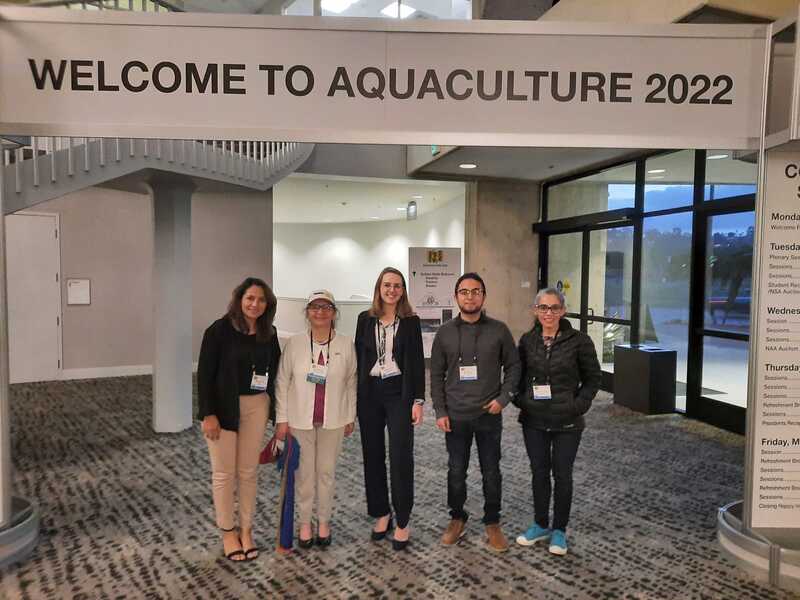
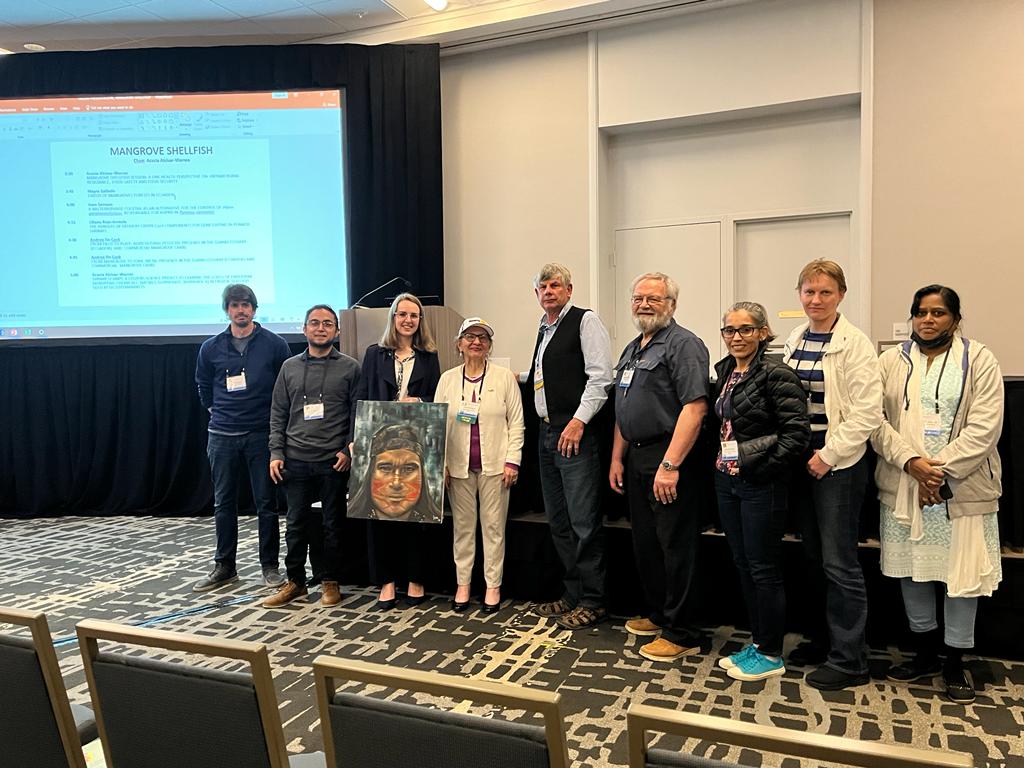
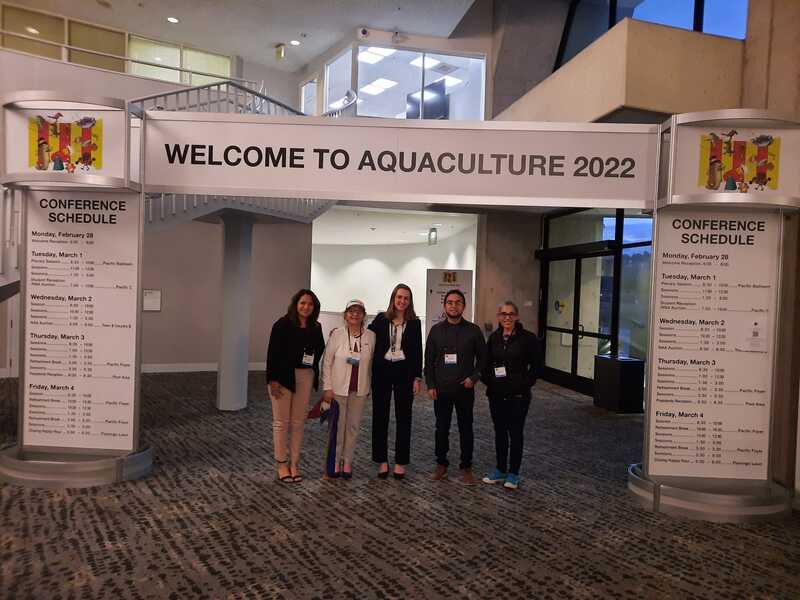
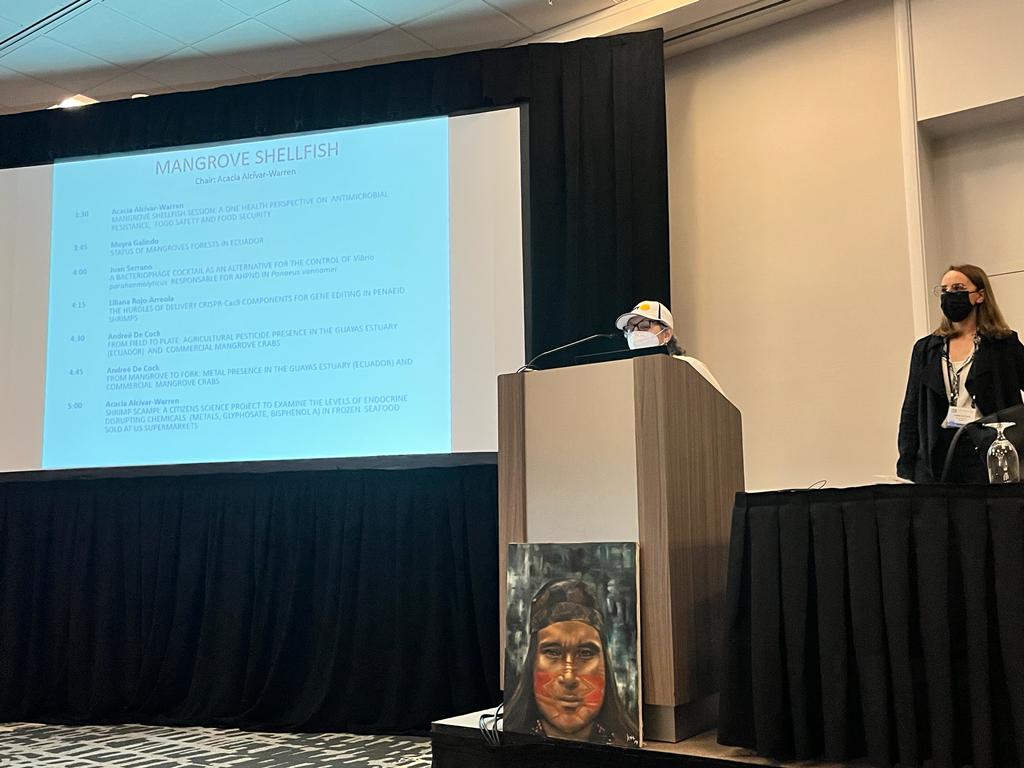
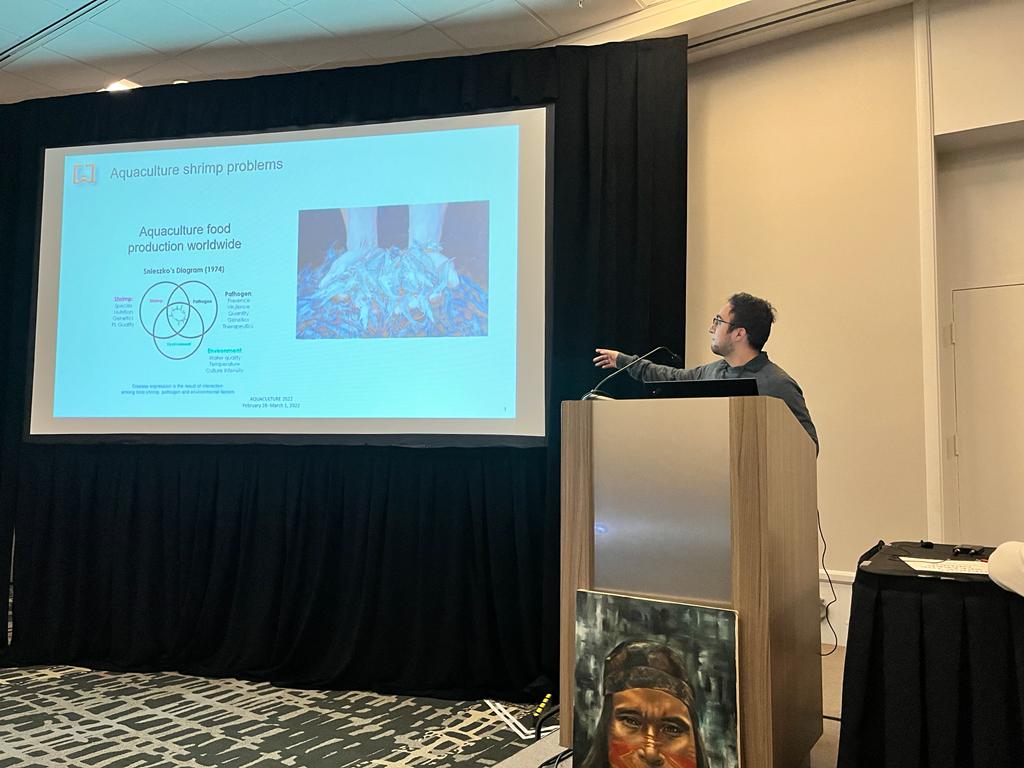
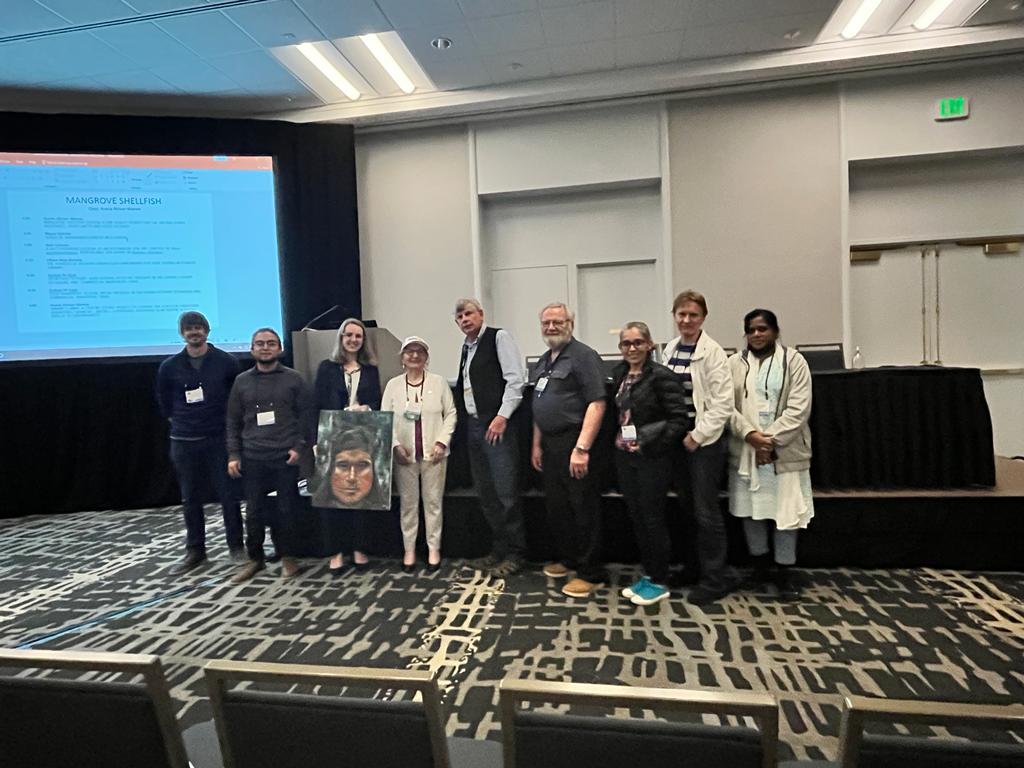








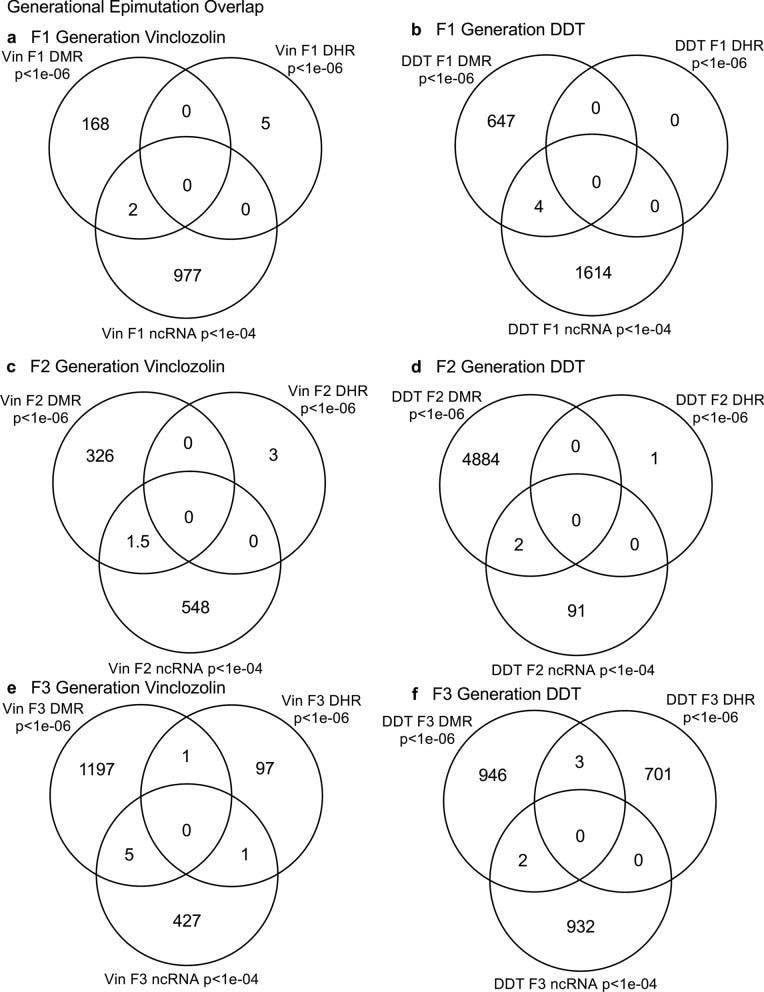
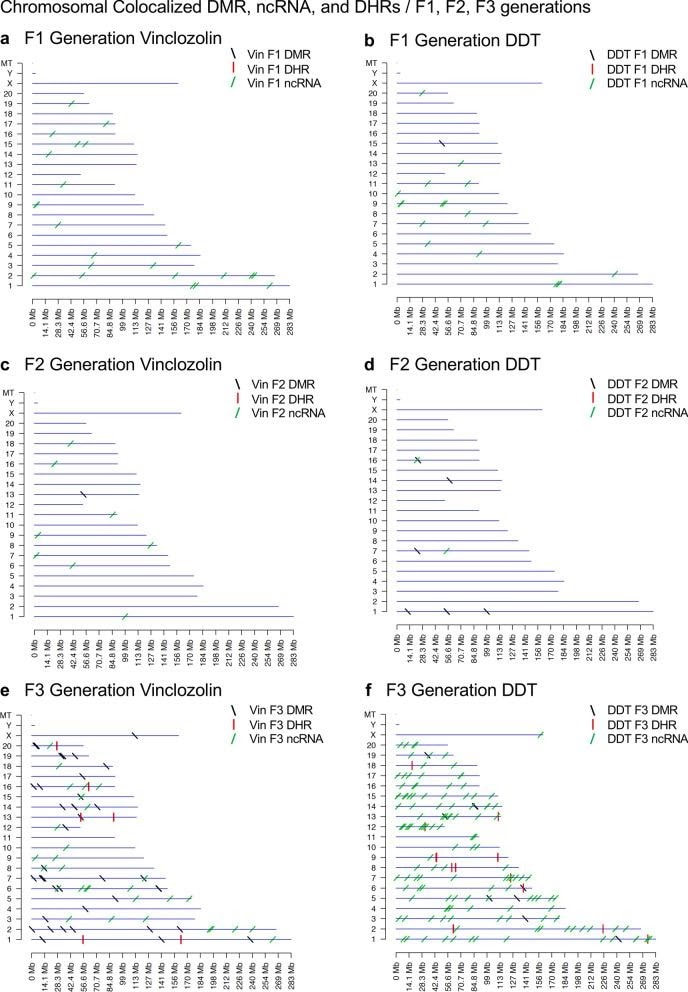
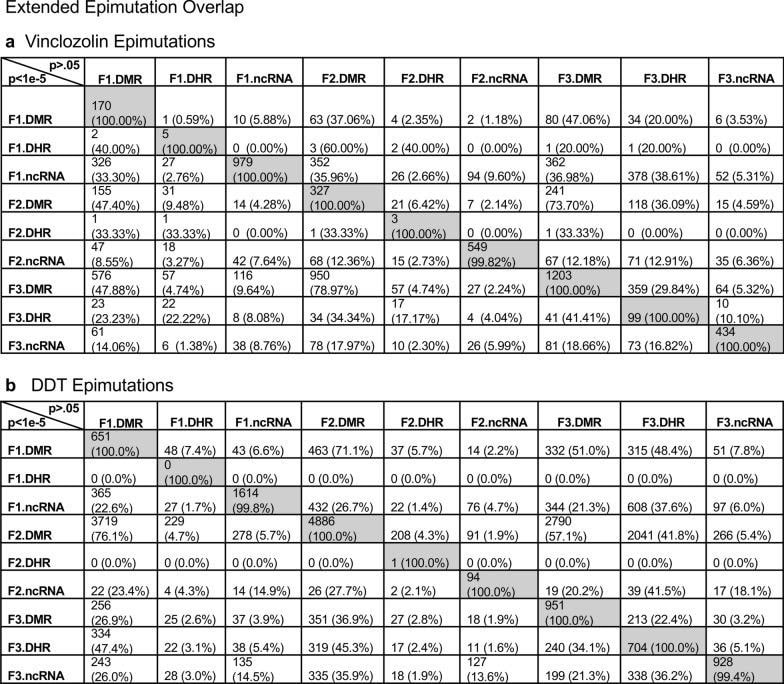
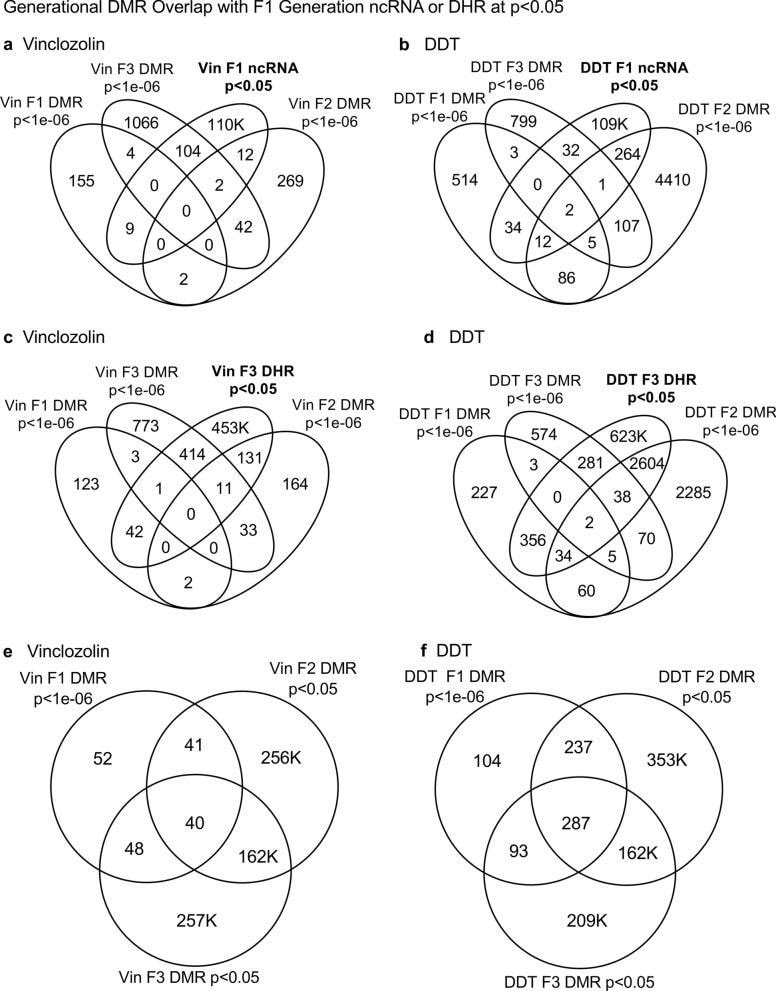
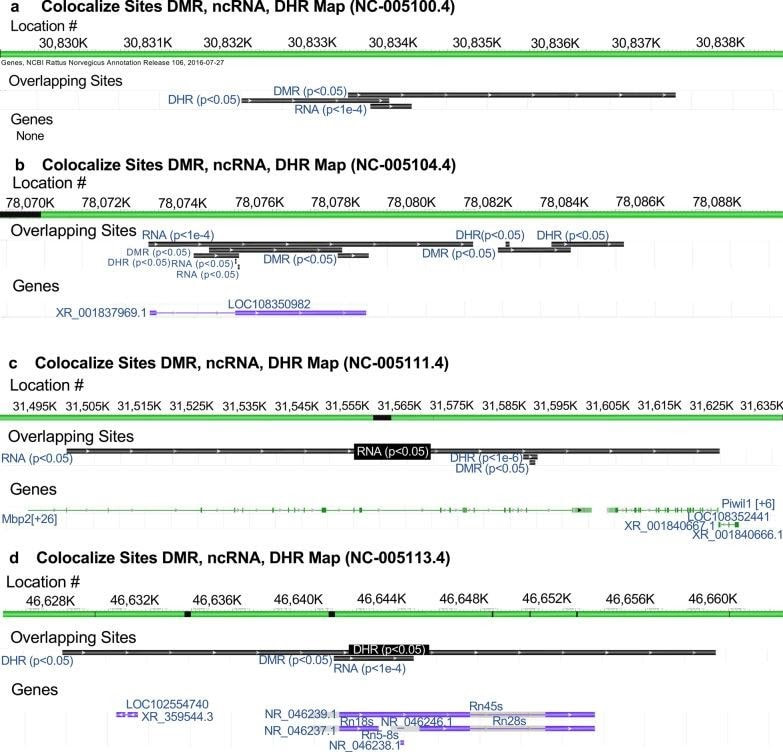
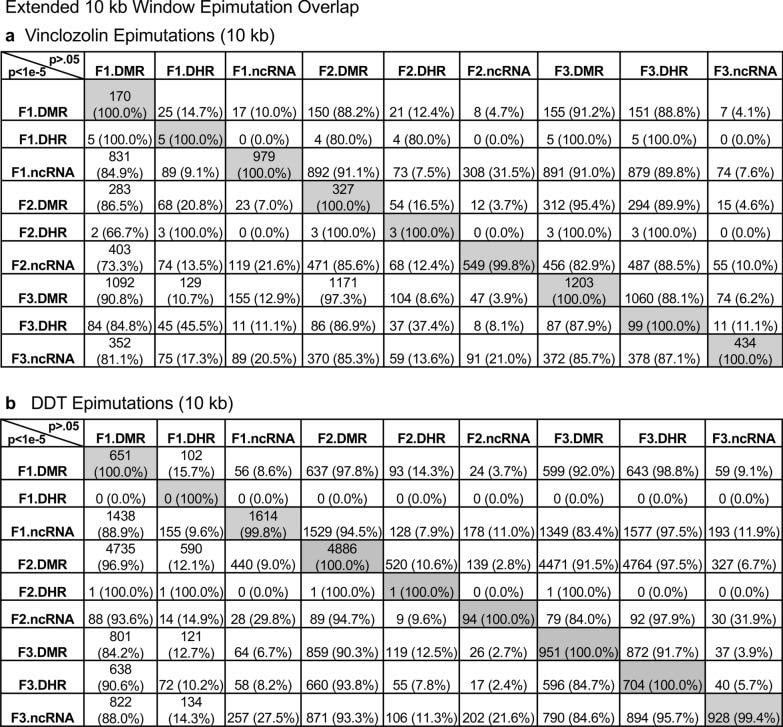
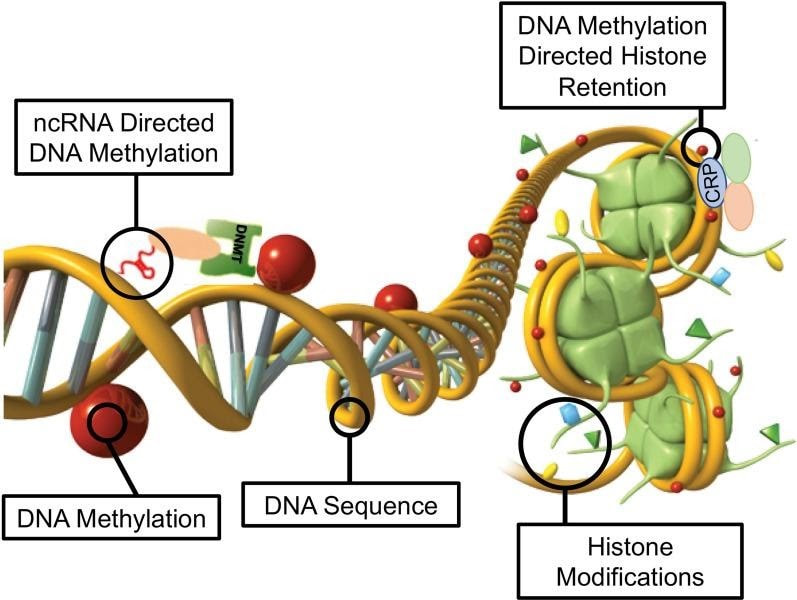

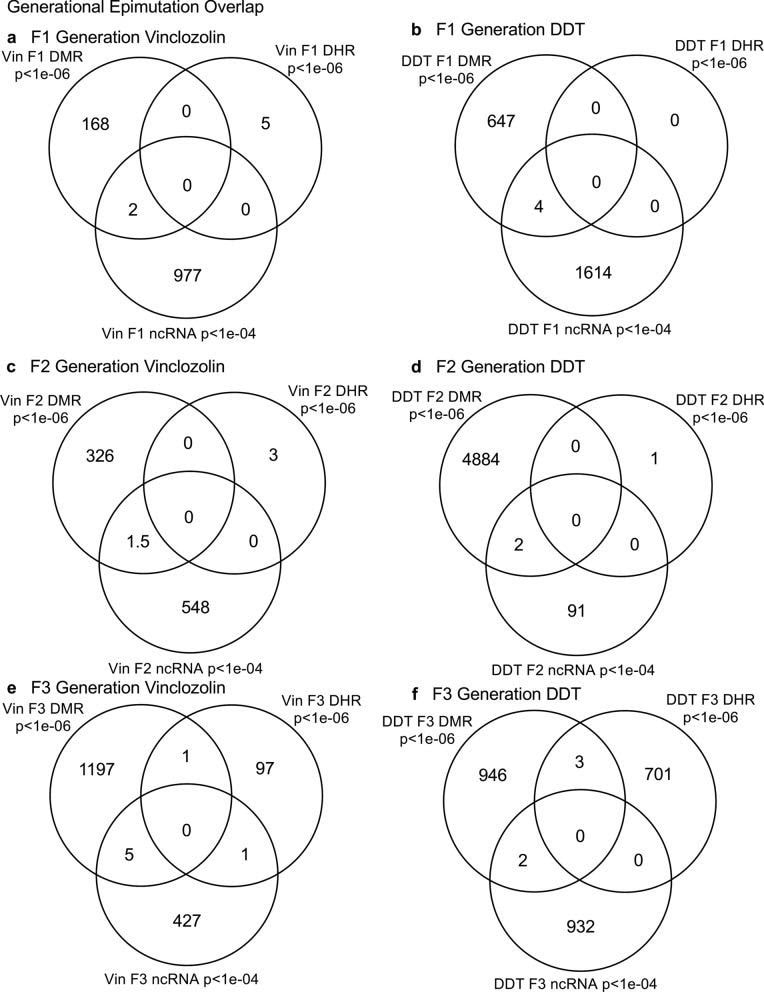
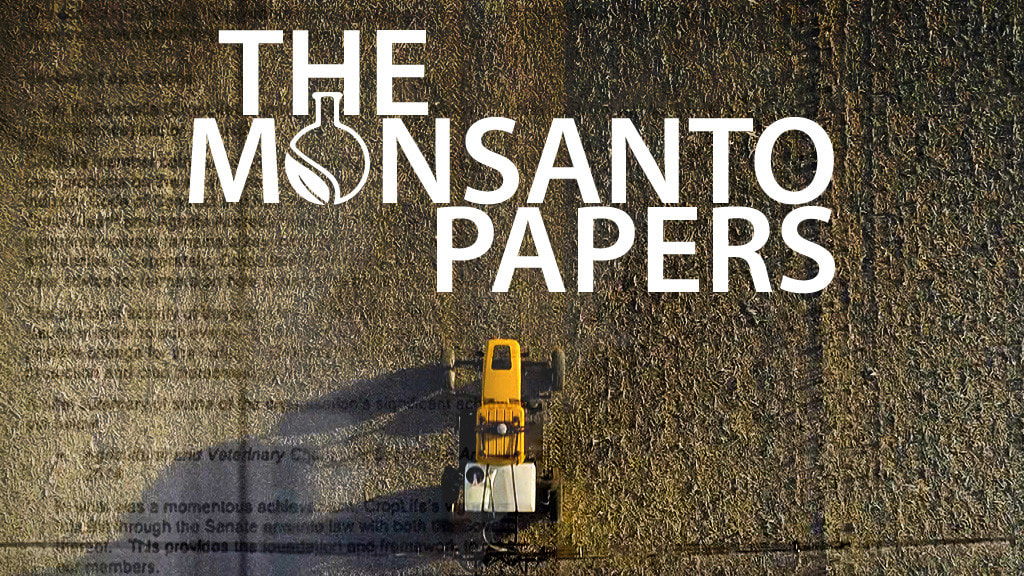

 Canal RSS
Canal RSS
